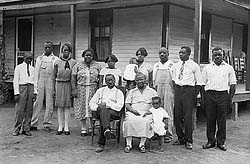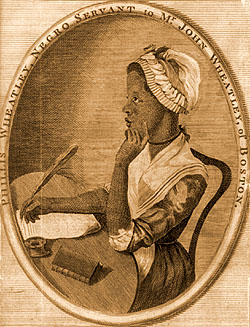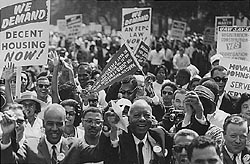What is “culture?”
Culture is a body of learned behaviors common to a given human society. It has patterned and predictable form and content to a degree—yet is variable from individual to individual within a given society. Culture is changeable over time. In fact, one of culture’s most predictable aspects is its constant state of change. It changes because people learn culture. The relationship between what is taught and what is learned is not absolute. Thus some of what is taught is lost, while new interpretations of culture are constantly being made.
Essential Features
Culture can be further broken down into the following essential features:
Systems of Meaning
These systems include forms of communication of which language is primary, traditional beliefs, performances and practices, religion, ceremonies, and celebrations. Language is perhaps the most basic meaning system of any cultural group. It includes shared meanings of words, grammar, uses of language and silence, as well as body language. Language is only one component of the larger set of methods people use to negotiate meaning. Other methods used include written and oral communication and expressive cultural forms such as art, dance, and sacred rituals.
Religious ceremonies like baptism are ways in which people express fundamental beliefs or systems of meaning that structure their perceptions of life and death. Some ethnographic cultural resources like this landscape gain their significance from enactment in, near, or on them of such ceremonies. Landscapes like these may be part of or near park service lands.
People also express their perceptions of the world through secular cultural performances and celebratory practices. Such performances and celebrations not only have ethnographic significance for a cultural group but also are valuable elements of America cultural heritage. The mission of the New Orleans National Historical Park for example is to enhance and instill public appreciation and understanding of the origins, early history, development and progression of this uniquely American music art form—jazz…[T]o preserve unimpaired this cultural resource and it’s core values for the enjoyment, education, and inspiration of this and future generations (New Orleans Jazz National Historical Park 2004).
Social Order
All societies organize themselves socially into families. Some societies emphasize their kin groups and organize themselves by kin relationships. Most people form communities. While there are commonalities in the various ways people organize themselves they also may have a characteristic organization such as recognizing their mothers people more so than the fathers in reckoning kinship and descent. Other groups emphasize the father’s relatives and reckon inheritance through the male members of the family.
People have characteristic settlement patterns and establish social institutions to meet the group’s spiritual, educational, health and welfare needs.
National Parks may occupy lands that have been cultural resources for generations of people and that continue to have significance for contemporary people because their fore parent lived there. The National Park helps to preserve the material evidence of people’s social institutions like this school one of five buildings preserved on Nicodemus National Historic Site, the only remaining western town established by African Americans during the Reconstruction Period.
Material Culture
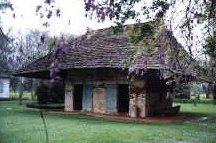
Africa House, built by African peoples on Melrose Plantation owned by 18th century French African Americans called “People of Color.”
Material culture is defined here as distinctive techniques of a group and their characteristic products, includes the ways people obtain subsistence, their food ways, crafts, architecture and technology. Africa House on Melrose Plantation in Natchitoches is an example of 18th century African American architectural design and building technology.
The Gullah tradition of creating coiled grass baskets is an African American craft that has been handed down from generation to generation. Instead of weaving the baskets, a needle made from a spoon handle, bone or nail is used to sew natural materials together. The most commonly used materials are sweetgrass, palmetto leaves, longleaf pine needles and a marsh grass called black rush.
Culture Change
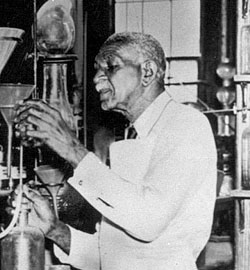
George Washington Carver: research scientist, teacher, naturalist, and conservationist. 1896–1943. Tuskegee Institute, Alabama.
People modify culture. They strategies they use to modify culture include: acculturation, accommodation, assimilation, and both cultural and counter-cultural resistance.
-
Acculturation
When people of different cultures encounter one another they may change their own cultural ways or resist change. Even when people resist cultural change, people of both cultures usually have a mutual influence on the customs of one another. This is called acculturation. Acculturation implies that people adapt and change, i.e. adaptation, to suit new conditions and suggests some measure of flexibility. For example, Europeans and Africans in the colonial Americas adapted their customary diet to include corn, a staple of American Indians on the East Coast. Europeans also adapted to the use of various herbal treatments that Africans used to treat illness. The practice of vaccination to prevent small pox is reputed to have been introduced to Cotton Mather by an enslaved African slave. In nineteenth and twentieth centuries America, George Washington Carver, born a slave, completed college then applied the European scientific methods he learned to invent new uses for southern crops. Carver developed peanut butter and both paint pigments and fertilizer from sweet potatoes.
-
Accommodation
People in cross-cultural contact may not change to new cultural customs but rather adjust or accommodate to the differences in ways that both groups find acceptable. Accommodation, as this is called, was often the way in which enslaved Africans responded to the circumstances in which they found themselves. For example, enslaved Africans used building techniques they knew to create houses in the customary architectural forms of their homeland, but made them out of the material resources abundant in their new environment. Slave owners adapted also. Many learned to accept the African foods, like okra and rice and learned from Africans how to prepare the foods for example how to pound rice to separate the kernel from the chafe.
Accommodation can be seen in many forms, including social accommodation. Differences in power relationships between interacting cultural groups may result in changes in behavior of both groups. Englishmen exhibit social accommodation when they placed European forms over essentially African words like the name “Joe” for the African name “Cudjo” or “Venus” over the name “Benah.” Africans responding to these Europeanized forms of their names also demonstrate social accommodation.
-
Assimilation
A dominating group may forcibly attempt to change the cultural customs of the subordinated group and the subordinated group may willingly accept the new cultural ways. In either instance, the subordinated groups’ cultural pattern is absorbed or assimilated into the main cultural body. Africans and their descendants were forcibly or voluntarily assimilated into Europeans culture and society in the case of in their dress and gender-related work roles. Phyllis Wheatley was enslaved at age seven directly from Africa. By the time, she was a teen-ager she had fully assimilated European cultural customs in dress, religion and became the first published African American woman poet.
-
Resistance Strategies
Finally, where power differential exist between cultural groups, the subordinated group may develop resistance strategies to avoid the social and cultural effects of domination or to change the inter-group relationships toward a more equitable distribution of power.
- Cultural Resistance strategies are the things people do to preserve their cultural identity and language. These may include using traditional names for people or objects in the environment. People may pass on folk tales, proverbs even ways of preparing foods as a means of retaining their cultural identity.
- Counter Cultural Resistance strategies are the various ways that people contest and resist social domination. These strategies may range from what one anthropologist calls “weapons of the weak” like the use of jokes to diffuse explosive situations, to outright rebellion against domination. Some of the many counter-cultural resistance strategies used by African Americans, especially during enslavement include migration, military service, intercultural alliances, political agitation, litigation, and social self-exclusion. Avoidance of domination by leaving the situation is probably the most common resistance patterns Africans and their descendants employed to avoid the social and cultural effects of domination. Litigation, use of the judicial system is another counter cultural resistance strategy they have used with varying degrees of effectiveness from the 17th century until the present.
Each unit in this course will explore, describe, and explain African American cultural heritage in terms of these essential features of culture.
Cultural Heritage
| Systems of Meaning | Social Order | Material Culture | Change |
|
|
|
|






